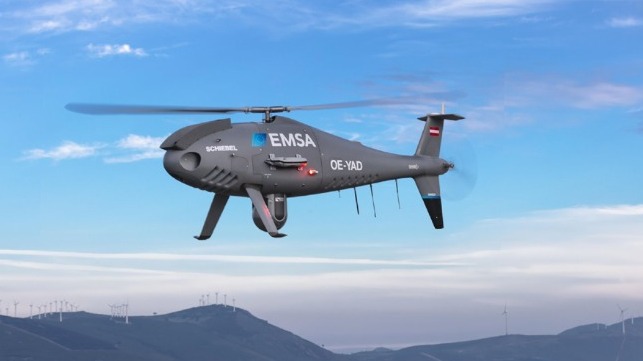Japan Coast Guard Plans Drones for Monitoring and SAR Efforts

The Japan Coast Guard is the latest maritime authority planning to deploy drones. The Japanese will join a growing number of mostly European maritime authorities that are using unmanned aircraft for maritime surveillance.
After a successful test of drone technology last year, the Japan Coast Guard included the technology in its budget for 2022 according to the Asahi Shimbun news outlet. The Coast Guard is requesting tens of millions of dollars to be used to lease the drones. The newspaper also reports that it is the beginning of a long-term program with further requests planned in subsequent years to expand the drone fleet.
The Coast Guard said the purpose of the drones would be to increase its efficiency in conducting surveillance throughout Japan’s territorial waters. They noted that there have been repeated intrusions by foreign vessels into Japan’s waters. The drones will be used both on patrols to monitor ships in Japan’s waters and will also be deployed on missions such as at sea searches and dangerous elements such as overflying volcanos.
“One aim of the acquisition is to concentrate more personnel and equipment in waters near the disputed Senkaku Islands in the East China Sea where Chinese vessels are increasingly active,” the Asahi Shimbun reports. Monitoring for illegal fishing is another mission for the drones.
The Coast Guard’s current fleet includes 12 large cutters as well as smaller vessels, jets, and helicopters. The jets, for example, require a crew of five whereas the drones can operate entirely remotely with fewer operators at a central control station while providing more air time. Infrared cameras mounted in the unmanned aircraft will send images back to the operators while radar will monitor the ships and report on movements.
In the fall of 2020, the Japan Coast Guard spent $9 million testing the SeaGuardian, a drone manufactured by General Atomics of the United States. Among the elements they were testing was the ability of the cameras to spot people floating in open waters as well as to read the identities of individual vessels.
The European Maritime Safety Agency for the past few years has been operating its Remotely Piloted Aircraft System (RPAS). The services are offered free to all EU member states and have been deployed broadly from the English Channel to the Baltic and in the Mediterranean. In addition to programs to provide surveillance, several of the individual countries have used unmanned aircraft for environmental programs and pollution monitoring. Drones were deployed to measure the emissions of vessels to ensure compliance with fuel and emission regulations. This summer EMSA announced that both Spanish and Finnish authorities were participating in the RPAS program to monitor their coastal waters. The Port of Antwerp also announced plans this year to begin regular monitoring around the port through the use of drones.
